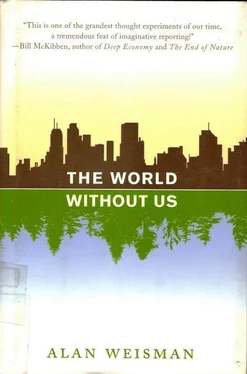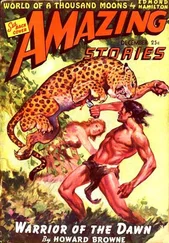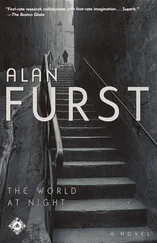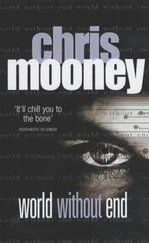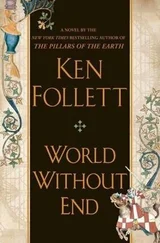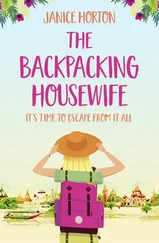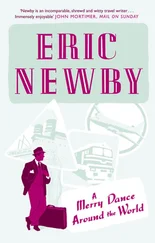Once, North African cattle were wild. “But after thousands of years with humans,” says Western, “they’ve been selected for a gut like an oversized fermentation vat to eat huge amounts of forage during the day, because they can’t graze at night. So now they’re not very quick. Left on their own, they’d be rather vulnerable prime beef.”
And a lot of it. Cattle now account for more than half the live weight of African savanna ecosystems. Without Maasai spears to protect them, they would provide an orgy for binging lions and hyenas. Once cows were gone, there would be more than double the feed for everything else. Shading his eyes, Western leans against his Jeep and calculates what the new numbers would mean. “A million and a half wildebeest can take out grass just as effectively as cattle. You’d see much tighter interaction between them and elephants. They would play the role the Maasai refer to when they say that ‘cattle grow trees, elephants grow grass.’”
As for elephants without people: “Darwin estimated 10 million elephants in Africa. That was actually quite close to what was here before the big ivory trade.” He turns to look at the female herd sloshing in the Amboseli swamp. “At the moment we have half a million.”
No people and 20 times more elephants would restore them as the undisputed keystone species in a patchwork mosaic African landscape. By contrast, in North and South America, for 13,000 years nearly no creatures except insects have eaten tree bark and bushes. After mammoths died, enormous forests would spread unless farmers cleared them, ranchers burned them, peasants cut them for fuel, or developers bulldozed them. Without humans, American forests represent vast niches awaiting any herbivore big enough to extract their woody nutrients.
Partois ole Santian heard the story often when he was growing up, wandering with his father’s cows west of Amboseli. He listens respectfully as Kasi Koonyi, the gray old man living with his three wives in a boma in Maasai Mara, where Santian now works, tells it again.
“In the beginning, when there was only forest, Ngai gave us bushmen to hunt for us. But then the animals moved away, too far to be hunted. The Maasai prayed to Ngai to give us an animal that wouldn’t move away, and He said wait seven days.”
Koonyi takes a hide strap and holds one end of it skyward, to demonstrate a ramp sweeping down to Earth. “Cattle came down from heaven, and everyone said, ‘Look at that! Our god is so kind, he sent us such a beautiful beast. It has milk, beautiful horns, and different colors. Not like wildebeest or buffalo, with only one color.’”
At this point, the story gets sticky. The Maasai claim all the cattle are meant for them, and kick the bushmen out of their bomas . When the bushmen ask Ngai for their own cattle to feed themselves, He refuses, but offers them the bow and arrow. “That’s why they still hunt in the forests instead of herding like we Maasai.”
Koonyi grins, his wide eyes glowing red in afternoon sun that flashes off the pendulous, cone-shaped bronze earrings that stretch his lobes chin-ward. The Maasai, he explains, figured out how to burn trees to create savannas for their herds; the fires also smoked out malarial mosquitoes. Santian gets his drift: When humans were mere hunter-gatherers, we weren’t much different from any other animal. Then we were chosen by God to became pastoralists, with divine dominion over the best animals, and our blessings grew.
The trouble is, Santian also knows, the Maasai didn’t stop there.
Even after white colonials took so much grazing land, nomadic life had still worked. But Maasai men each took at least three wives, and as each wife bore five or six children, she needed about 100 cows to support them. Such numbers were bound to catch up with them. In Santian’s young lifetime, he has seen round bomas become keyhole-shaped as Maasai appended fields of wheat and corn and began to stay in one place to tend them. Once they became agriculturalists, everything began to change.
Partois ole Santian, who grew up in a modernizing Maasai generation with the option of studying, excelled in sciences, learned English and French, and became a naturalist. At 26, he became one of a handful of Africans to earn silver certification from the Kenya Professional Safari Guide Association—the highest level. He found work with an ecotourism lodge in the Kenyan extension of Tanzania’s Serengeti Plain, Maasai Mara, a park combining an animals-only reserve with mixed conservation areas where Maasai, their herds, and wildlife might coexist as they always have. The red oat-grass Maasai Mara plain, dotted with desert date and flat-topped acacias, is still as splendid a savanna as any in Africa. Except that the most predominant animal grazing here is now the cow.
Often, Santian ties leather shoes on his long legs and climbs Kileleoni Hill, the highest point in the Mara. It is still wild enough to find impala carcasses hanging from tree limbs where leopards have stored them. From the top, Santian can look 60 miles south into Tanzania and the immense green-grass sea of the Serengeti. There, honking wildebeest mill in huge June flocks that will soon merge like floodwaters and burst across the border, bounding through rivers that boil with crocodiles awaiting their annual northward migration, with lions and leopards dozing above in the tortilis trees, needing only to roll over to make a kill.
The Serengeti has long been an object of Maasai bitterness: half a million square kilometers from which they were swept away in 1951, for a theme park cleansed of a keystone species, Homo sapiens, to humor Hollywood-bred tourist delusions of Africa as wilderness primeval. But Maasai naturalists like Santian are now grateful for it: the Serengeti, blessed with perfect volcanic soils for grassland, is gene bank to the richest concentration of mammals on Earth, a source from which species might one day radiate and repopulate the rest of the planet, if it comes to that. Huge as it is, however, naturalists worry about how the Serengeti will maintain all those uncountable gazelles, let alone elephants, if everything surrounding it turns into farms and fences.
There isn’t enough rain to change all the savanna into arable farmland. But that hasn’t stopped the Maasai from multiplying. So far married to only one woman, Partois ole Santian decided to stop right there. But Noonkokwa, the childhood girlfriend he wed upon completing his traditional warrior training, was horrified to learn that she might be in this marriage alone, with no female companions.
“I’m a naturalist,” he explained to her. “If all the wildlife habitat disappeared, I’d have to farm.” Before subdividing began, Maasai considered farming beneath the dignity of men chosen by God to pastor cattle. They wouldn’t even break sod to bury someone.
Noonkokwa understood. But she was still a Maasai woman. They compromised at two wives. But she still wanted six children. He was hoping to hold it to four; the second wife, of course, would want some, too.
Only one thing, too terrible to contemplate, might slow all this proliferating before all the animals go extinct. The old man, Koonyi, had said it himself. “The end of the Earth,” he called it. “In time, AIDS will wipe out humans. The animals will take it all back.”
AIDS isn’t yet the nightmare for the Maasai that it has become for sedentary tribes, but Santian saw how it could be soon. Once, Maasai only traveled on foot through savannas with their cows, spear in hand. Now some go to towns, sleep with whores, and spread AIDS on their return. Even worse are the lorry drivers who now show up twice a week, bringing gasoline for the pickups, motor scooters, and tractors that Maasai farmers purchase. Even young uncircumcised girls are getting infected.
Читать дальше
